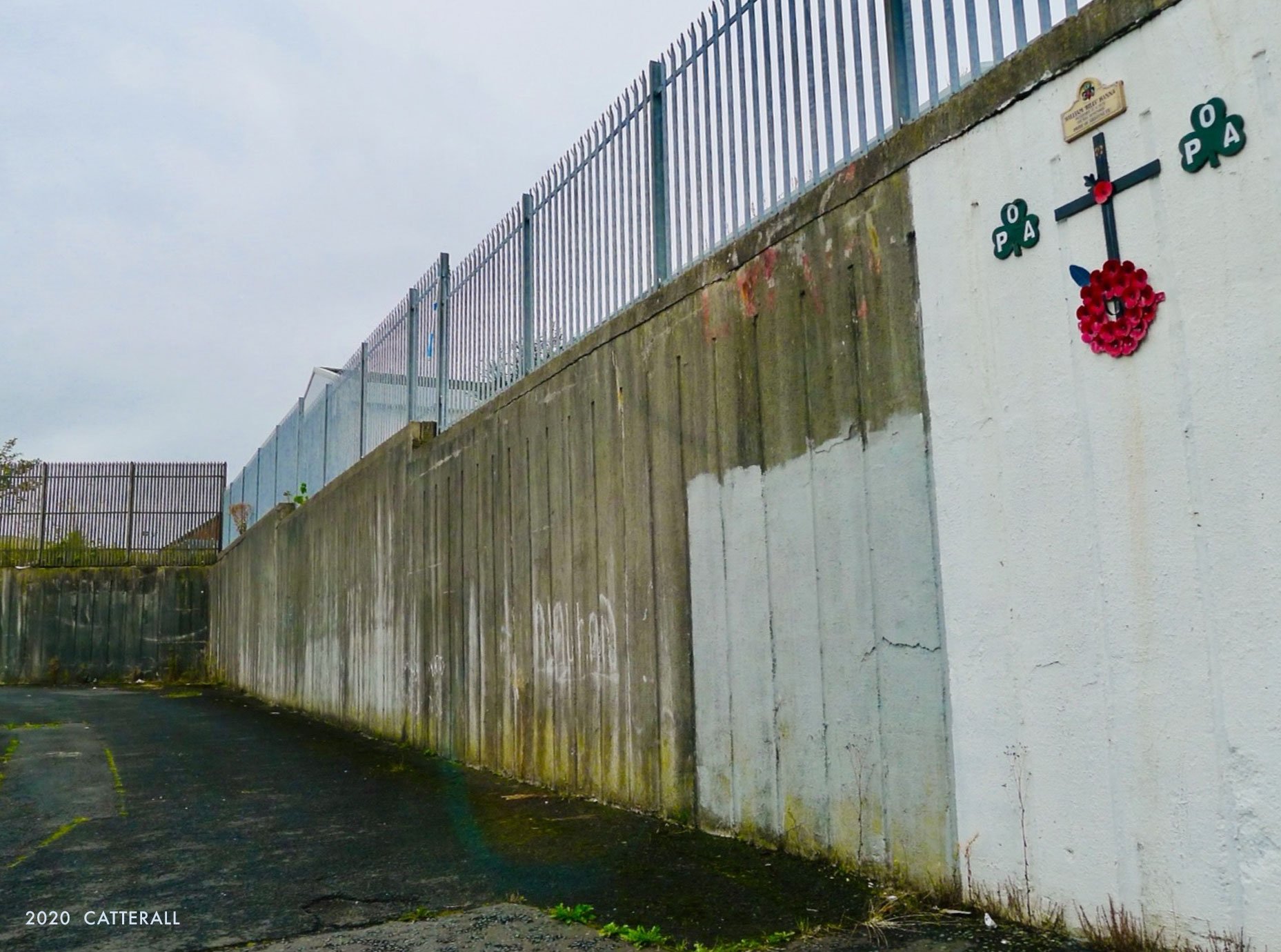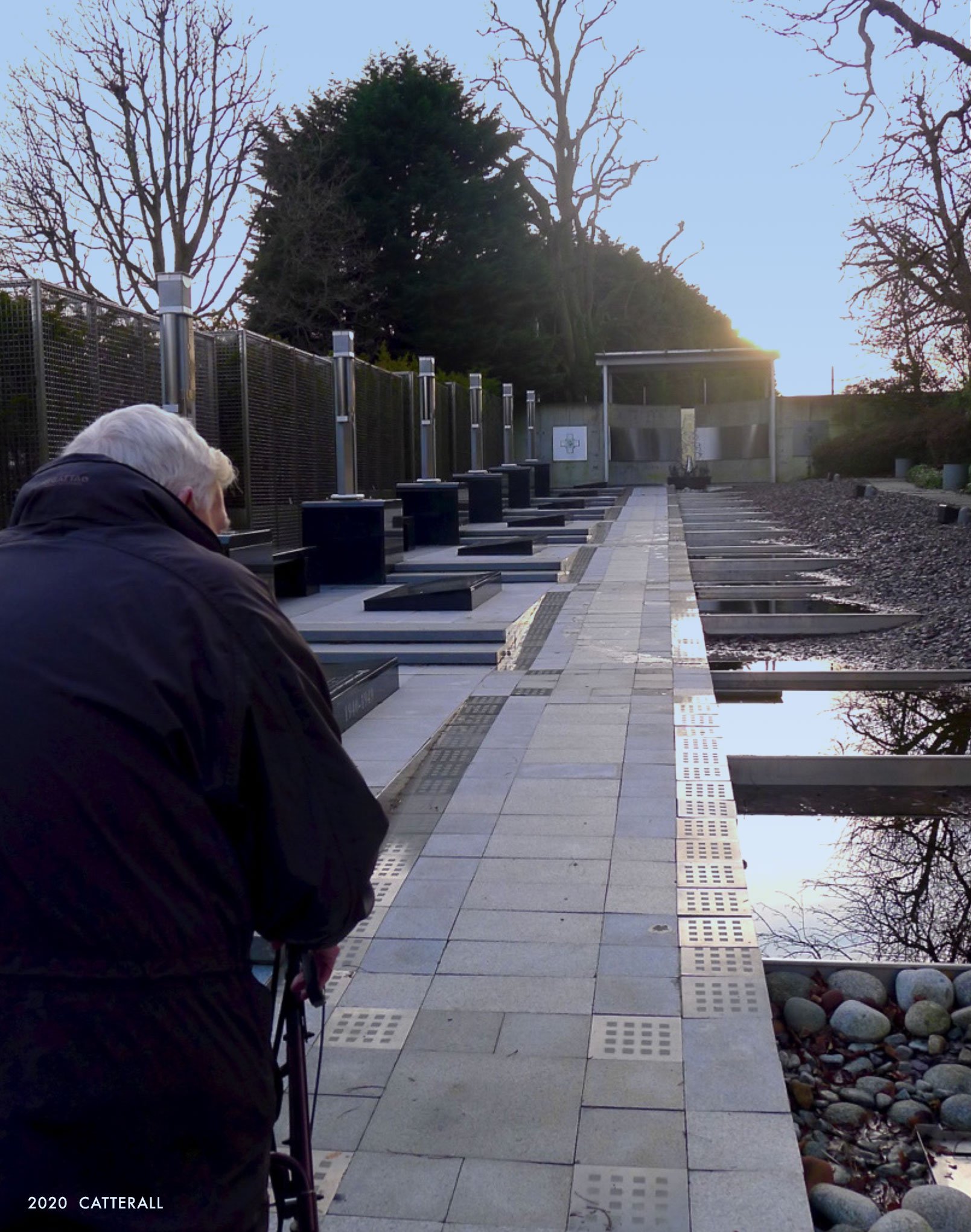Drawing the ring of steel was conceived of and designed by Kate Catterall. The event was planned and developed in collaboration with Paula McFetridge, artistic director of the renowned Belfast theatre group Kabosh. The project utilized the idea of the counter-monument, a monument that deliberately “… undermine[s] its own authority by inviting and then incorporating the ‘authority’ of the passerby” (Young, 2008). Counter-monuments, unlike conventional memorials, subvert official narratives, instead offering opportunities for critical reflection and polyvalent remembrance. They are a uniquely effective mechanism for commemoration on contested ground, where the experience of a conflict remains fresh and memorialization is fractured and segregated.
In March 1972, an IRA car bombing campaign was launched to disrupt commercial interests in the center of Belfast.
IRA bombing. News Letter in Donegall St. March 20, 1972. Images found on Twitter.
By March 24th 1972 the regional government of Northern Ireland had been suspended and Direct Rule imposed from London. Concurrently, a 2.2-mile security cordon was erected around the city center securing businesses, a police station and the British Army HQ, then located in the Grand Central Hotel (1972-82). Broadcast internationally, the cordon was a very visible manifestation of government power and control over the rapidly deteriorating situation in Northern Ireland.
Donegall Place (South) Checkpoint x 24.
For three decades local security forces and the British Army developed and refined strategies aimed at designing out terrorism (Coffee, 2004); strategies later applied elsewhere in the face of international threats. Security decisions created a militarized build-environment that became normalized over time and continues to impede peace efforts. Traces of Troubles-era security planning are still evident on the streets of Belfast today, if you know where to look.
Blinkers restaurant, on Rosemary St. Waitress documenting historical photographs shown on the walking tour and shows us a metal plate where checkpoint once stood.
A Troubles memorial was proposed as part of the peace process in 1998, but did not garner public support. Sectarian and segregated monuments and murals to the dead of the conflict exist across Belfast, but shared markers to the period are few.
North Belfast Memorial commemorating the dead of the local IRA battalion.
Ad hoc memorial to one-time UVF leader Billy Hanna.
Private Royal Ulster Constabulary (RUC) Memorial Garden.
The ring of steel, once such a dominant element of the built environment, was slowly dismantled between 1995 and 2002. Those born after the 1998 Peace Agreement, and newcomers to Belfast, are unaware of the cordon and the lasting impact of the security policy on people and place.
Donegall Place checkpoint circa 1972 and view of the city hall in 2015.
The experience of cuing to be searched entering the central shopping district rendered the entire population suspect and was one of few common experiences during the Troubles cutting across class, gender, age and sectarian lines. This made the ring of steel an ideal mnemonic for a shared memorial to the Troubles focused on recollections of everyday life during the conflict.









